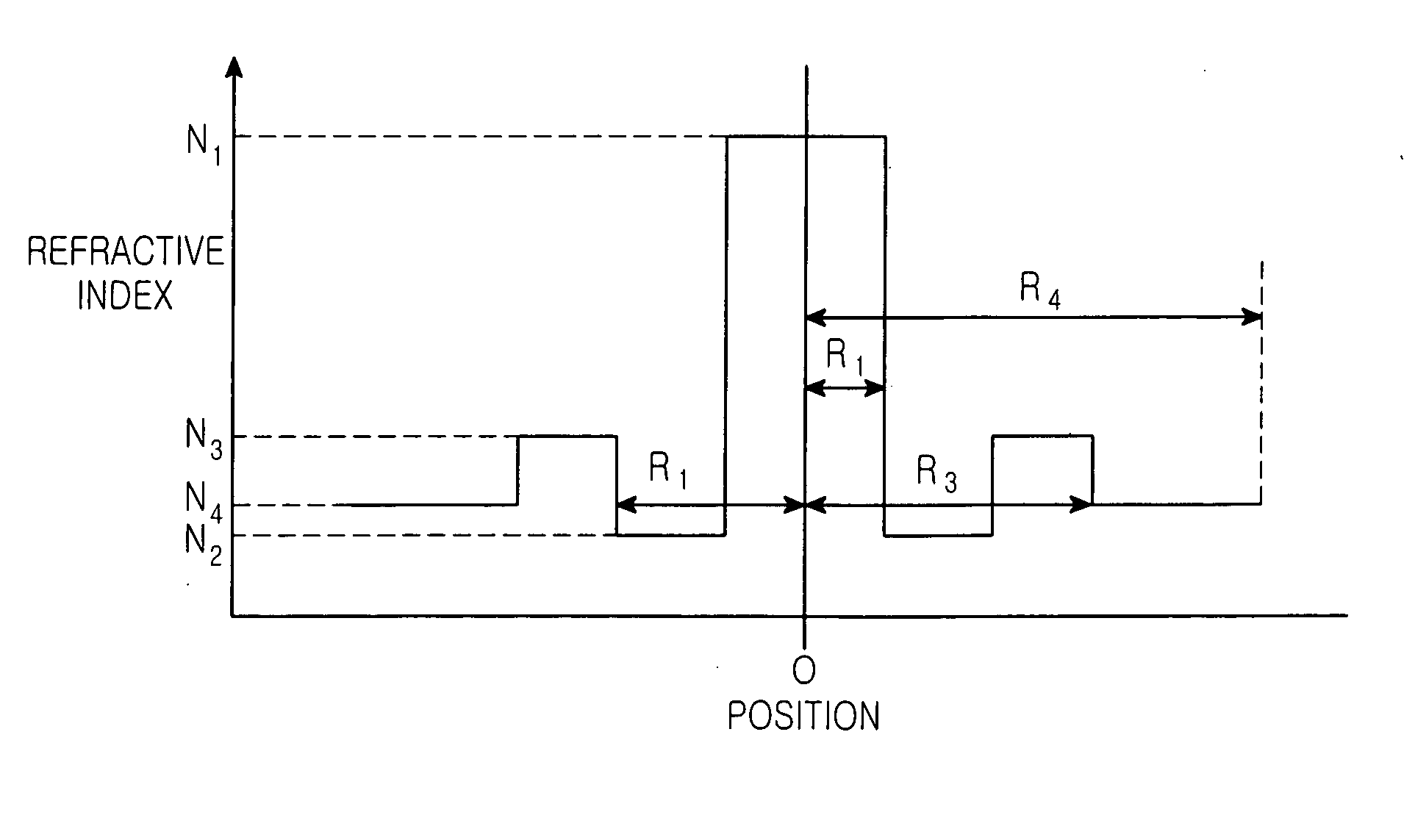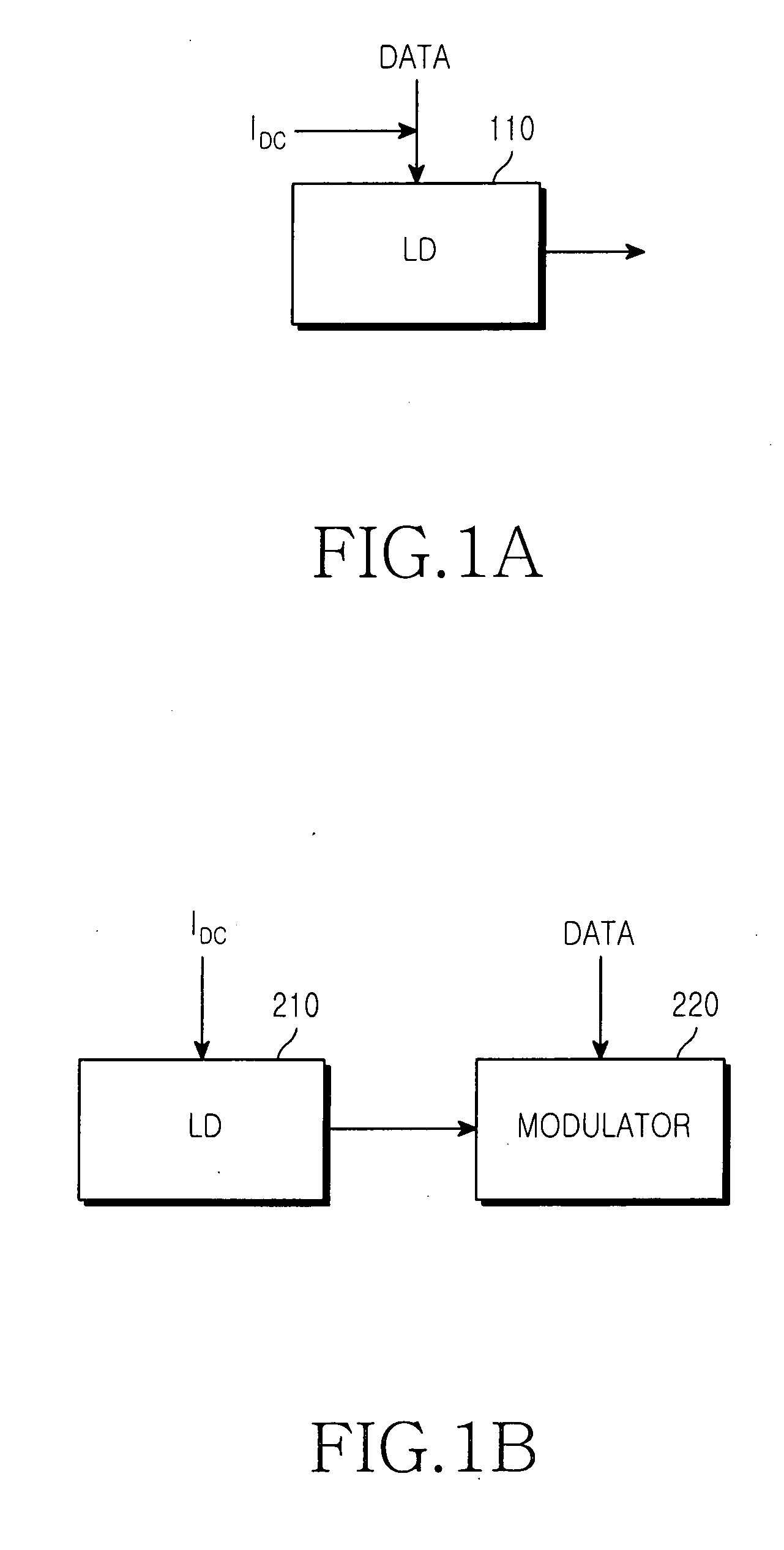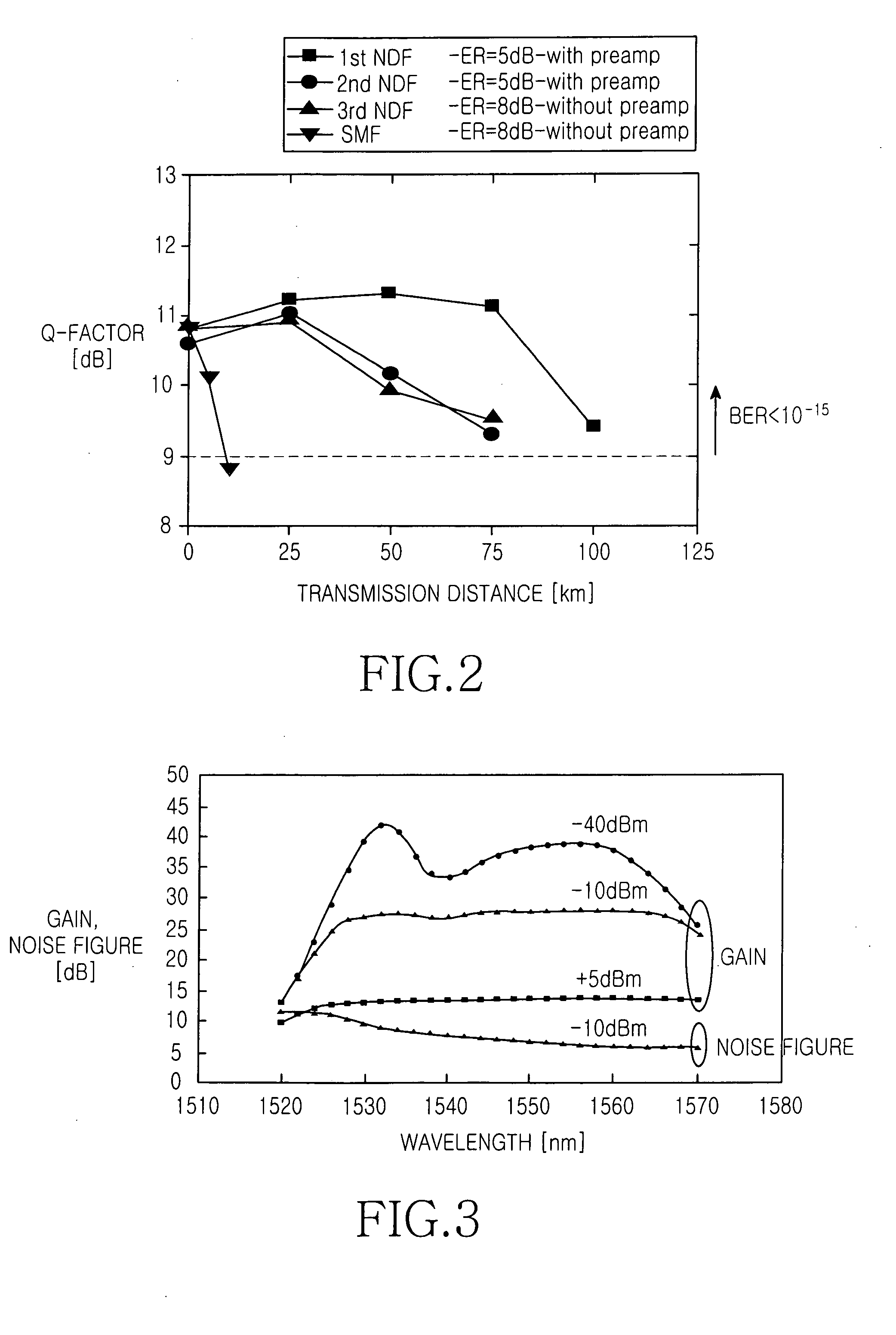Optical fiber for metro network
- Summary
- Abstract
- Description
- Claims
- Application Information
AI Technical Summary
Benefits of technology
Problems solved by technology
Method used
Image
Examples
Embodiment Construction
[0030] Hereinafter, embodiments of the present invention will be described with reference to the accompanying drawing. For the purposes of clarity and simplicity a detailed description of known functions and configurations incorporated herein will be omitted when it may obscure the subject matter of the present invention.
[0031]FIG. 5a shows the construction of an optical fiber for a metro network according to one embodiment of the present invention. FIG. 5b shows a refractive index profile of the optical fiber shown in FIG. 5a. The optical fiber 300 includes a core 310 having of a core region 320, a refractive index depressed region 330, and an annular region 340, and a clad 350.
[0032] The core region 320 has a radius R1 from the center of the optical fiber 300 and a refractive index N1. Here, N1 is the highest refractive index of the optical fiber 300 as compared to the refractive index depressed region 330, and the annular region 340 and the clad 350.
[0033] The refractive index...
PUM
 Login to View More
Login to View More Abstract
Description
Claims
Application Information
 Login to View More
Login to View More - R&D
- Intellectual Property
- Life Sciences
- Materials
- Tech Scout
- Unparalleled Data Quality
- Higher Quality Content
- 60% Fewer Hallucinations
Browse by: Latest US Patents, China's latest patents, Technical Efficacy Thesaurus, Application Domain, Technology Topic, Popular Technical Reports.
© 2025 PatSnap. All rights reserved.Legal|Privacy policy|Modern Slavery Act Transparency Statement|Sitemap|About US| Contact US: help@patsnap.com



